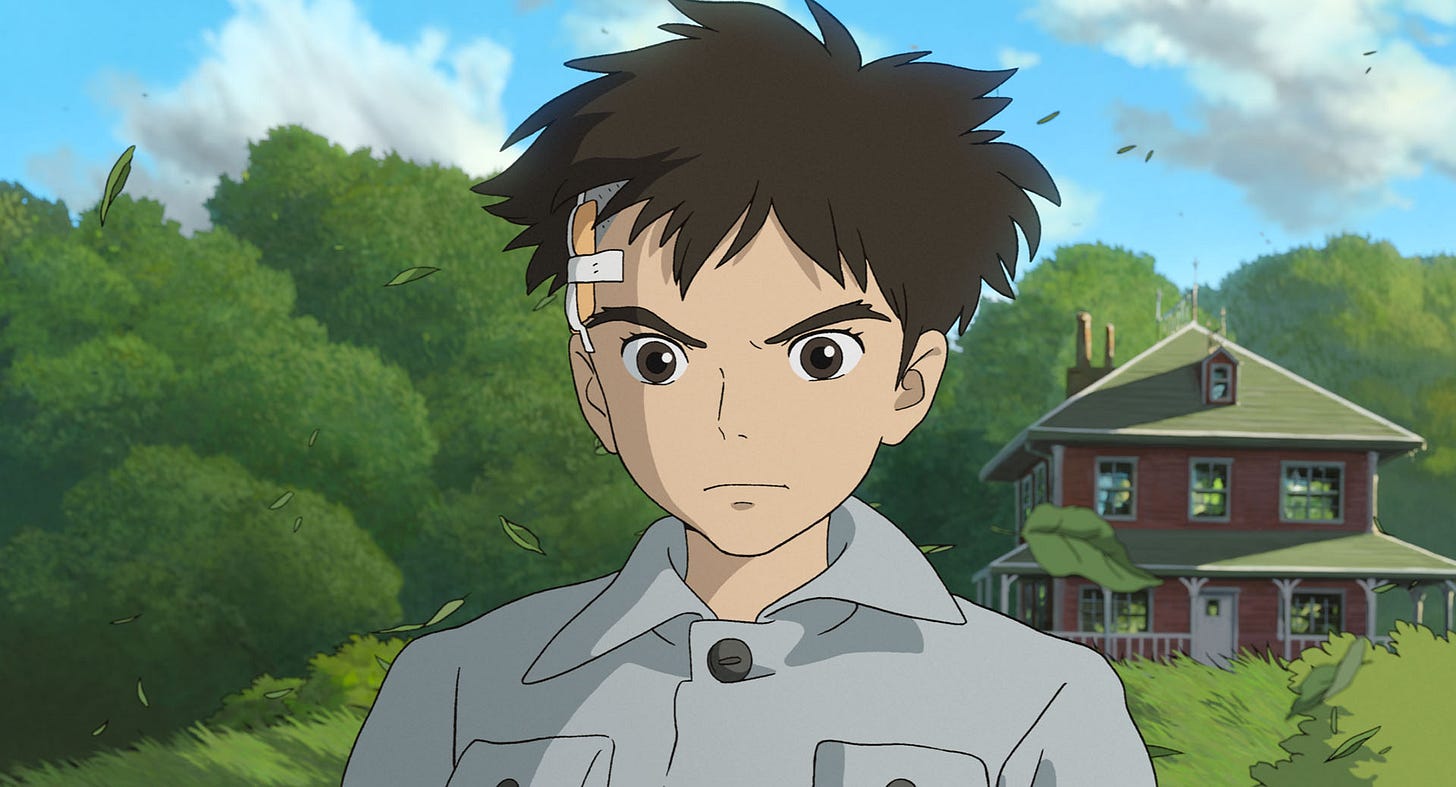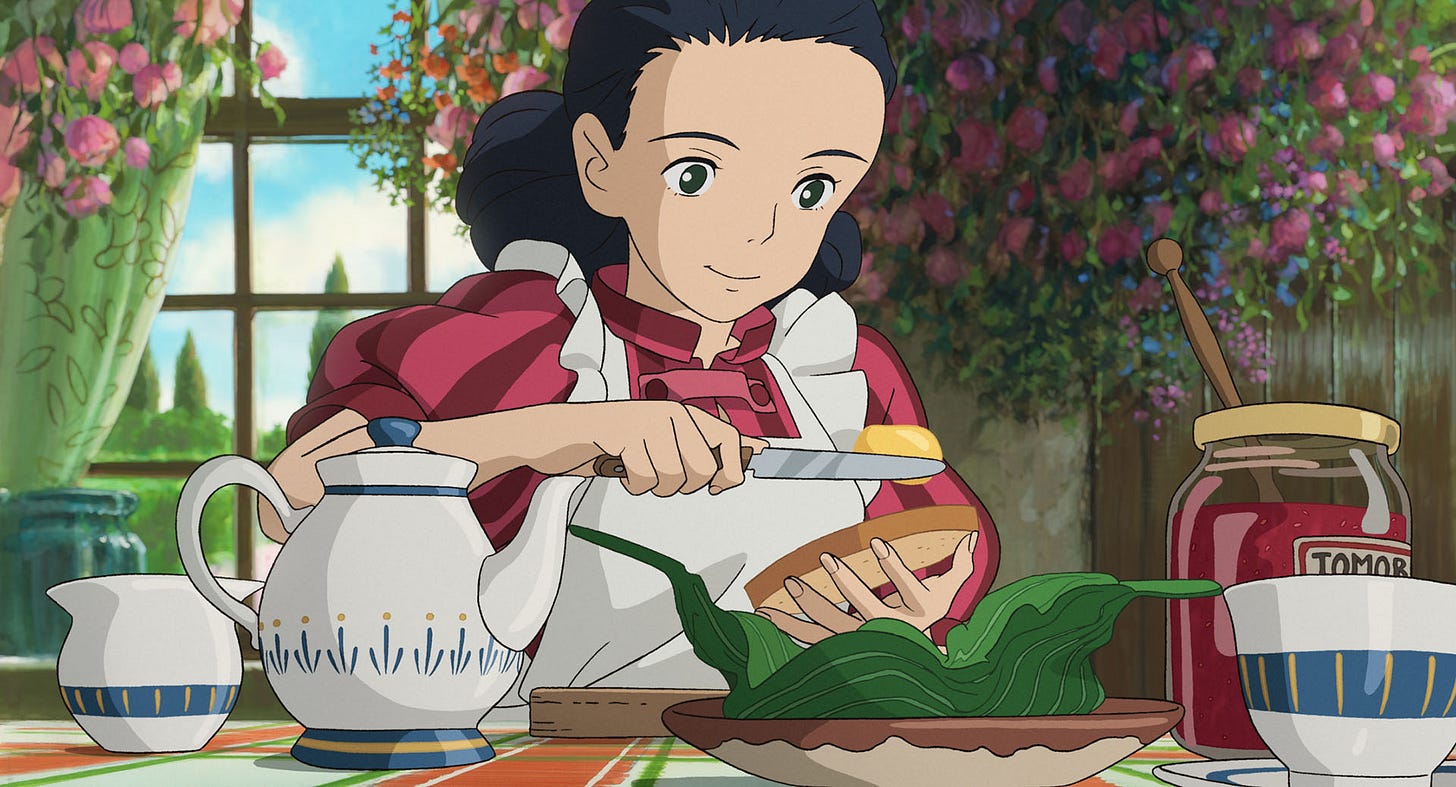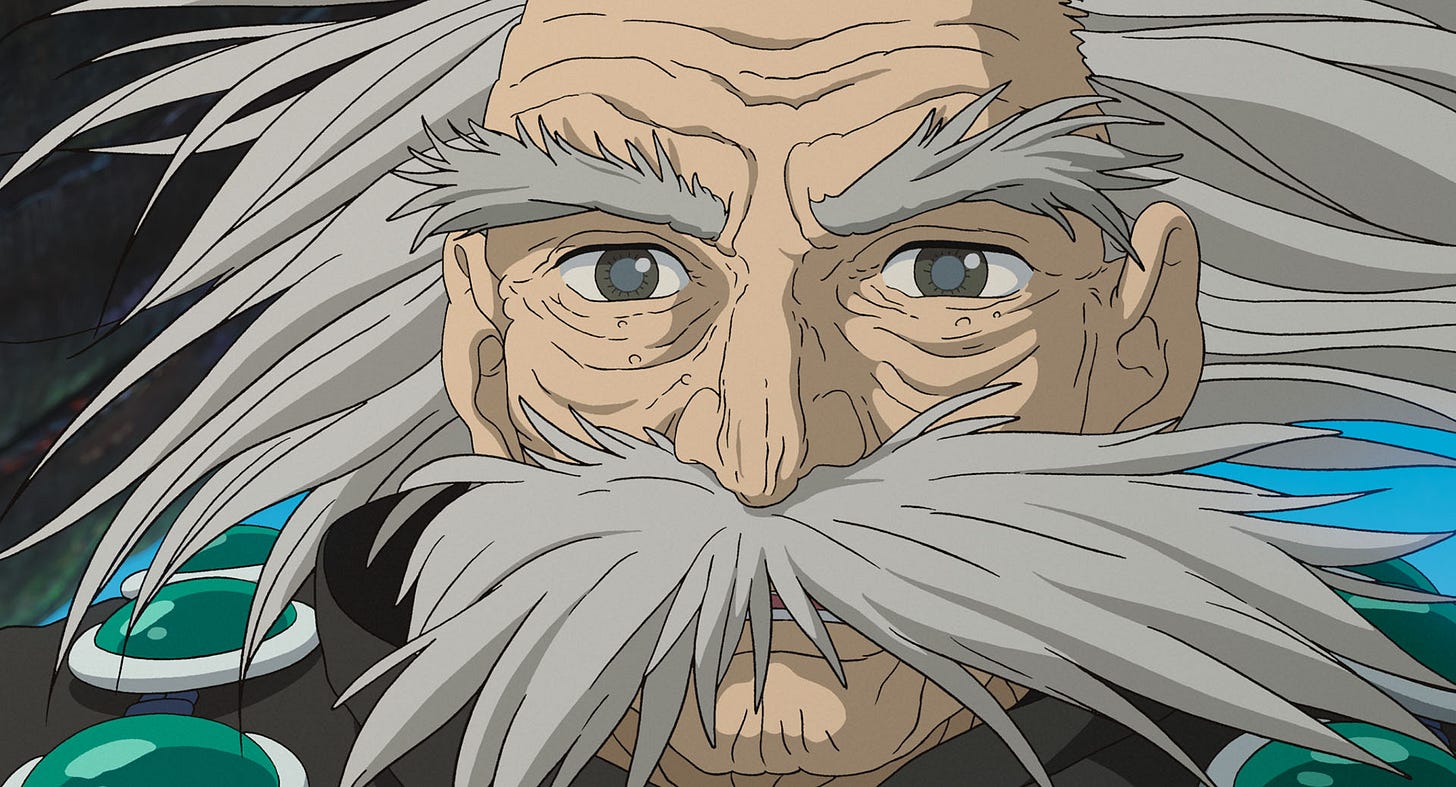'The Boy and the Heron' shows Hayao Miyazaki in fine, bewildering form
The master Japanese animator's new film takes flight on a fantastical journey
Hayao Miyazaki’s return to filmmaking after a decade, when most of the legendary Japanese animator’s fans assumed he had retired, comes not with a whimper, but with a siren.
Before we even see anything on screen in Studio Ghibli’s new “The Boy and the Heron,” we hear the ear-splitting wail of an air raid siren. The movie opens not with the delicate whimsy of “Ponyo” or “My Neighbor Totoro,” but in frightening chaos.
The year is 1943, and young Mahito (Soma Santoki in the subtitled Japanese version I watched) has awakened to the siren, and the sound of Allied planes firebombing Tokyo. The opening sequence is both beautiful and terrifying, and perhaps an ode to “Grave of the Fireflies,” the devastating 1988 film by Miyazaki’s late friend and Studio Ghibli partner Isao Tahakata. As droplets of fire rain from the sky onto the devastated city, Mahito frantically races to the hospital to find his mother. But he is too late.
This scene of wartime destruction puts the audience on notice that “The Boy and the Heron” will not be an easy watch. Perhaps parents of younger kids might be better off staying home and popping in a DVD of “Howl’s Moving Castle” for now. But for the rest, “Heron” is a challenging, confounding and moving experience. In other words, classic Miyazaki.
Mahito is relocated to a small town with his father Shoichi (Takuya Kimura), the gruff owner of a munitions factory. Shoichi has quickly remarried to Natsuko (Yoshino Kimura), who is also Mahito’s aunt. Miyazaki resists the typical “evil stepmother” trope by making Natsuko a kind woman who worries about the shellshocked, grieving Mahito. She certainly worries more than his father.
Exploring the grounds of the estate, Mahito finds a ruined tower whose entrance is blocked by rubble. Living in the tour is a mysterious gray heron (Masaki Suda) who teases and antagonizes Mahito. When Natsuko goes missing, the heron tells Mahito that both her and his late mother are trapped in an alternate universe, and the tower is the entrance point.
The rest of “The Boy and the Heron” follows Mahito as he jumps from world to world in his quest. The visuals, lush and hand-painted in the Studio Ghibli style, are full of wonders, from cute little throw-pillow creatures called warawara to a menacing army that happens to be parakeets. Like “Spirited Away,” Mahito’s journeys operate on a sort of dream logic, and it’s best to just let Miyazaki’s splendors wash over you.
But at the core of such a fantastical film is a very real meditation on being human, and experiencing loss in life. The original Japanese title of “The Boy and the Heron” is “How Do You Live?”, which in the movie is the name of a book that Mahito’s mother has written.
I interpreted the title as “How Do You Go On Living?”, as Mahito grapples with how to keep his mother in his heart as he moves forward without letting grief consume him.
It’s a question that the 82-year-old Miyazaki has explored throughout his long career, a career that seemed to be finished in the 2015 documentary “The Kingdom of Dreams and Madness.” (“Filmmaking mostly brings suffering,” he jokes to the camera.) But I find it strangely heartening that he’s come back to the drafting table, still looking for answers.
“The Boy and the Heron” opens Friday, Dec. 8 in movie theaters. There are both subtitled and English dubbed versions available.






I'm so glad you're writing here, Rob. Thank you!